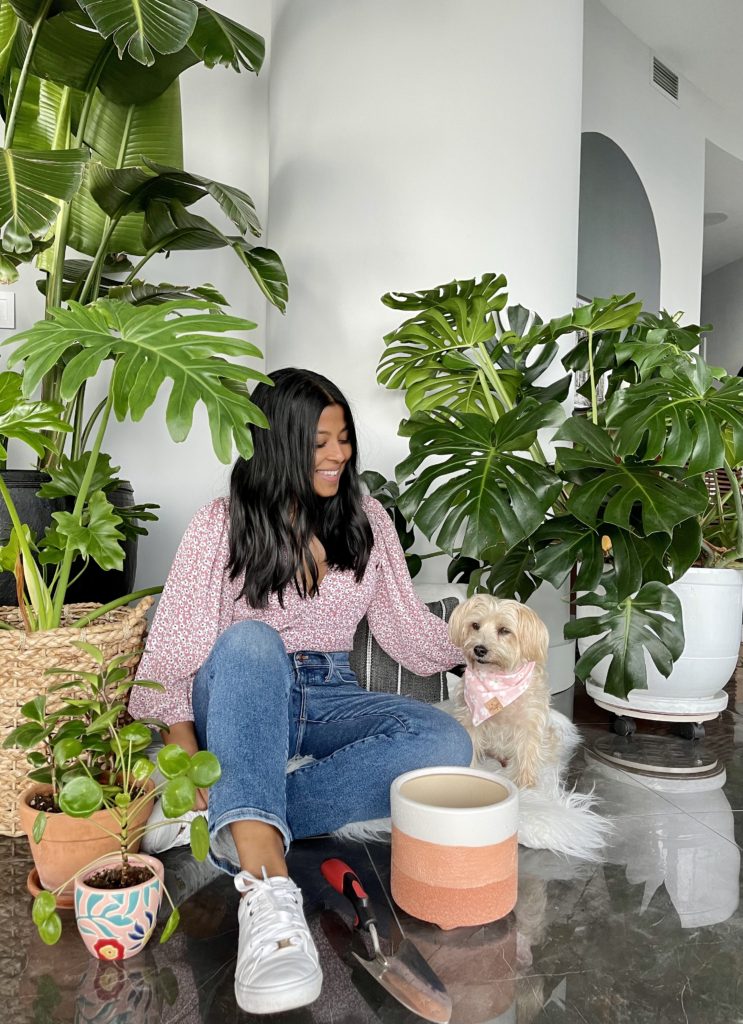
Many of us choose to be both dog parents and plant parents. But to have both plants and pets coexisting well together, you have to know which houseplants are best for dogs. Here’s a list of 15 safe plants for dogs to add to your dog-friendly garden and home.
I started my plant collection prior to becoming a pet parent. So I had to do research to find which houseplants are safe for dogs in my home and which non-toxic plants I could grow on my balcony garden.
Plants can make help make your home more welcoming by adding color, warmth, and comfort. An added bonus is that some plants can help purify the air in your home!
You can train your dog to stay away from your plants and not eat them as I’ve done with Teddy since he was a puppy. But to be on the safe side, you may want to stick with non-toxic plants if you have a pet in your home too.
The good news is there are many great options for non-toxic houseplants for dogs that can help you create a green oasis in your home and garden. Popular houseplants range from low maintenance plants that require little care, to plants that require more attention and bright light, to edible plants and colorful blooms for a garden.
What Houseplants Are Safe For Pets To Eat?
If your dog has a tendency to eat things, then it’s best for your dog’s health to avoid any poisonous plants. But to be clear, pets shouldn’t eat any plants even if it’s a non-toxic plant.
Although certain plants are considered non-toxic and safe for dogs, they can still affect your dog’s health by giving your dog an upset stomach or worse when eaten.
Symptoms Caused By Ingesting Toxic Plants May Include:
- Vomiting
- Diarrhea
- Abdominal pain
- Difficulty breathing
- Excessive drolling
- Loss of appetite
- Low energy
- In severe cases, coma and/or death
Please note this is a limited list of symptoms.
In severe cases, call the ASPCA pet poison helpline for assistance and/or take your dog to the emergency vet.
Popular Indoor Houseplants Safe For Dogs
Prayer Plant (Maranta leuconeura)
Prayer plants are great indoor plants that come in many varieties and have a uniquely beautiful look that folds at night giving it the appearance of hands folded in prayer. It prefers indirect sunlight as direct sunlight can scorch the plant’s leaves.
Spider plants (Chlorophytum comosum)
Spider plants are an excellent choice for novice plant parents and dog owners alike because they are considered low-maintenance plants. They require medium indirect sunlight with weekly watering. They look great in a hanging basket away from your pet’s reach.
Parlor Palm (Chamaedorea elegans)
The Parlor Palm is the most sold variety of house plant as it’s very easy to care for. It’s a true palm that has air-purifying qualities. It thrives in medium to bright indirect light and can tolerate low indirect light. There are other varieties of palms that are just as popular such as the Areca Palm (also known as Bamboo Palm or Chrysalidocarpus lutescens). This variety is a large houseplant that’s safe for dogs. Sago Palms are a variety that is poisonous to dogs.
Ponytail Palm (Beaucarnea recurvata)
The ponytail palm is drought tolerant and requires very little care. The trunk is used to store water and the long leaves that grow from the top of the trunk resemble a ponytail. Although easy to manage, it thrives in bright indirect to bright light.
Swedish Ivy (Plectranthus australis)
Swedish ivy is an ideal plant for beginners as it requires less frequent watering and can thrive in low light. It’s a great plant to hang because it trails beautifully.
Rattlesnake Plant (Goeppertia insignis)
The Rattlesnake plant gets its name from the distinct patterns on its leaves that resemble a rattlesnake. It’s not the best plant for beginners as it requires filtered bright light and moist soil that drains well.
Phalaenopsis Orchids
You have most likely seen the Phalaenopsis Orchid at the grocery store as it’s a very popular houseplant. It requires bright indirect light and water every 1-2 weeks, allowing the potting medium to dry out between waterings.
Pilea peperomioides
The Pilea or its common name, the Chinese money plant has bright green, coin-shaped leaves. They are a low-maintenance houseplant. They prefer bright, indirect light but can adjust to low-light areas. Water when the top half of the soil is dry. It’s a self-propagator, creating little babies around the mother plant. These can be shared with friends, which is how it gets its nickname, the friendship plant.
Boston Fern (Nephrolepis exaltata)
The Boston fern is a classic houseplant that can be seen hanging from front porches. It prefers bright, indirect light and a humid environment, especially during the dry winter months. A different variety of true ferns that is just as popular is the Maidenhair Fern.
Bird’s Nest Fern
A Bird’s Nest Fern is a safe houseplant for pet owners as it looks great hanging in a basket. It requires low to medium light and only needs weekly watering. Making it a great option for new plant parents.
Staghorn Fern (Platycerium spp)
Staghorn fern has a unique appearance with two kinds of leaves. The plant grows best mounted or in a basket because they usually grow perched on a tree. It prefers low to medium light and moderate moisture.
African violets (Saintpaulia)
African violets are beautiful flowering plants but require specific care to thrive. Water African violets at the base without allowing it to dry out completely or get waterlogged.
Air Plants (Tillandsia spp)
Air plants are a good idea for pet parents whose dogs get into the soil as these plants do not require soil. They are epiphytes, meaning they naturally grow on other plants such as tree branches. Although there’s no soil, they do require watering about once a week.
Succulents
Succulents are popular plants known for their easy care. But with a wide variety of succulents available, some can be toxic to dogs. Chickens and Hens is a popular type of succulents that is safe for dogs.
Indoor Herb Garden
Growing edible plants like herbs is a great idea for people who cook at home. Having fresh herbs certainly makes any dish better. There are many herbs that are non-toxic to dogs such as rosemary, peppermint, and chamomile. Find a full list of herbs that are safe for dogs on ASPCA’s list of non-toxic plants for dogs.
Best Dog-Friendly Plants For Your Garden
There are many flowers that can be poisonous to your furry friend. Here’s a list of plants for your garden that are safe for dogs. Check out ASPCA list for non-toxic plants for dogs.
- Gerbera Daisy
- Roses
- Zinnias
- Sun Flowers
- Petunias
- Pansies
- Jasmin
- Christmas Cactus
Common Houseplants Known To Be Toxic To Dogs
- Aloe Vera
- Sago Palms

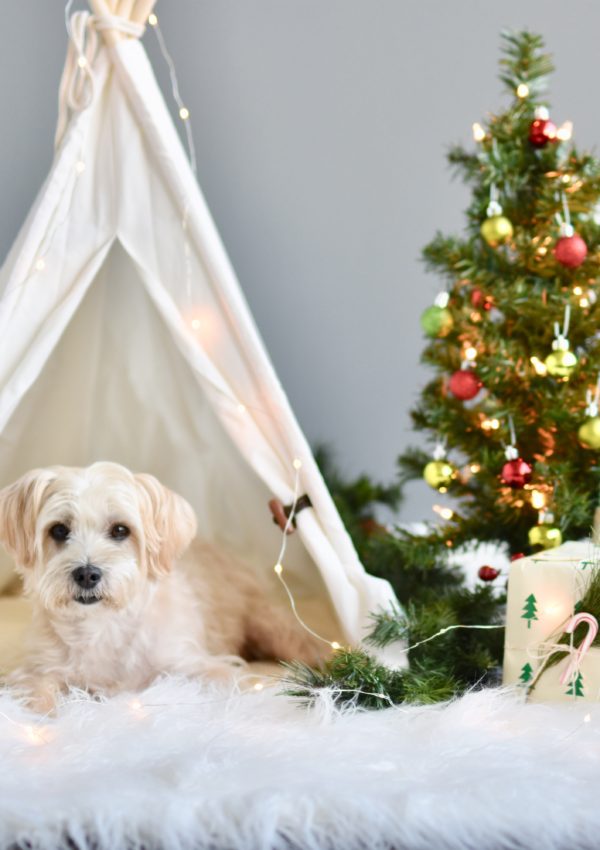
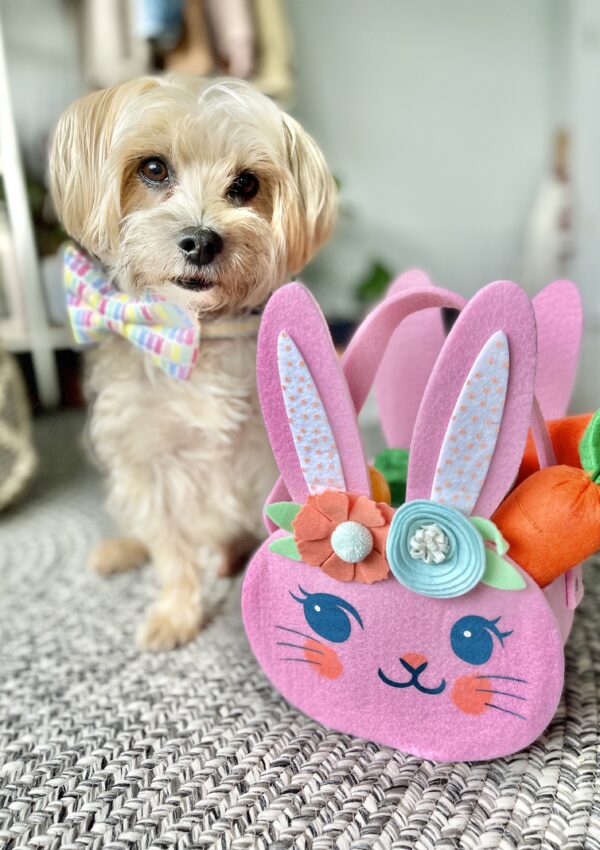
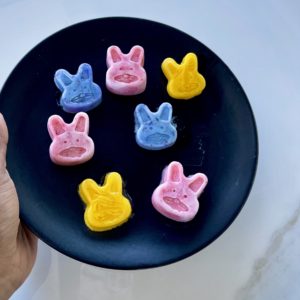
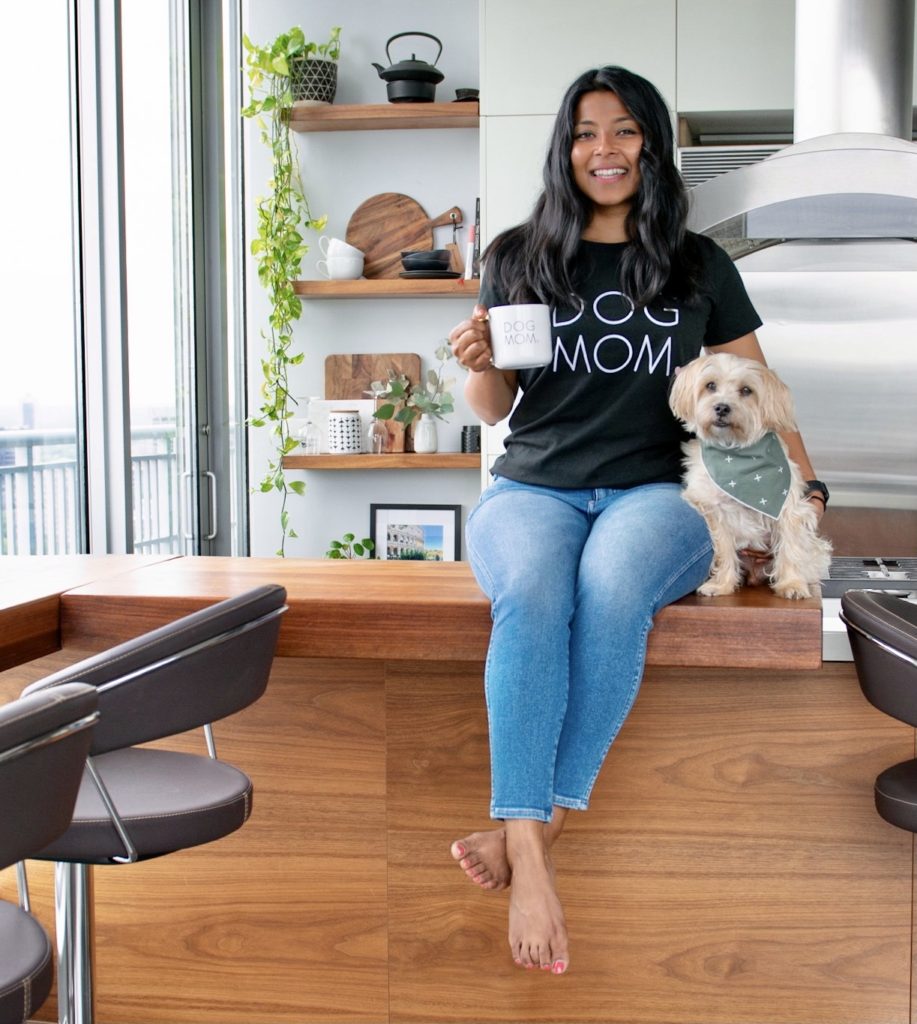
Leave a Reply